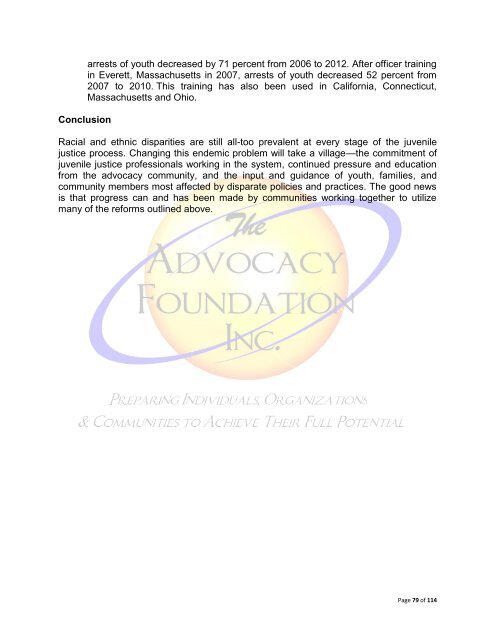African-American Youth in The Juvenile Justice System
African-American Youth in The Juvenile Justice System
African-American Youth in The Juvenile Justice System
You also want an ePaper? Increase the reach of your titles
YUMPU automatically turns print PDFs into web optimized ePapers that Google loves.
Conclusion<br />
arrests of youth decreased by 71 percent from 2006 to 2012. After officer tra<strong>in</strong><strong>in</strong>g<br />
<strong>in</strong> Everett, Massachusetts <strong>in</strong> 2007, arrests of youth decreased 52 percent from<br />
2007 to 2010. This tra<strong>in</strong><strong>in</strong>g has also been used <strong>in</strong> California, Connecticut,<br />
Massachusetts and Ohio.<br />
Racial and ethnic disparities are still all-too prevalent at every stage of the juvenile<br />
justice process. Chang<strong>in</strong>g this endemic problem will take a village—the commitment of<br />
juvenile justice professionals work<strong>in</strong>g <strong>in</strong> the system, cont<strong>in</strong>ued pressure and education<br />
from the advocacy community, and the <strong>in</strong>put and guidance of youth, families, and<br />
community members most affected by disparate policies and practices. <strong>The</strong> good news<br />
is that progress can and has been made by communities work<strong>in</strong>g together to utilize<br />
many of the reforms outl<strong>in</strong>ed above.<br />
Page 79 of 114

















